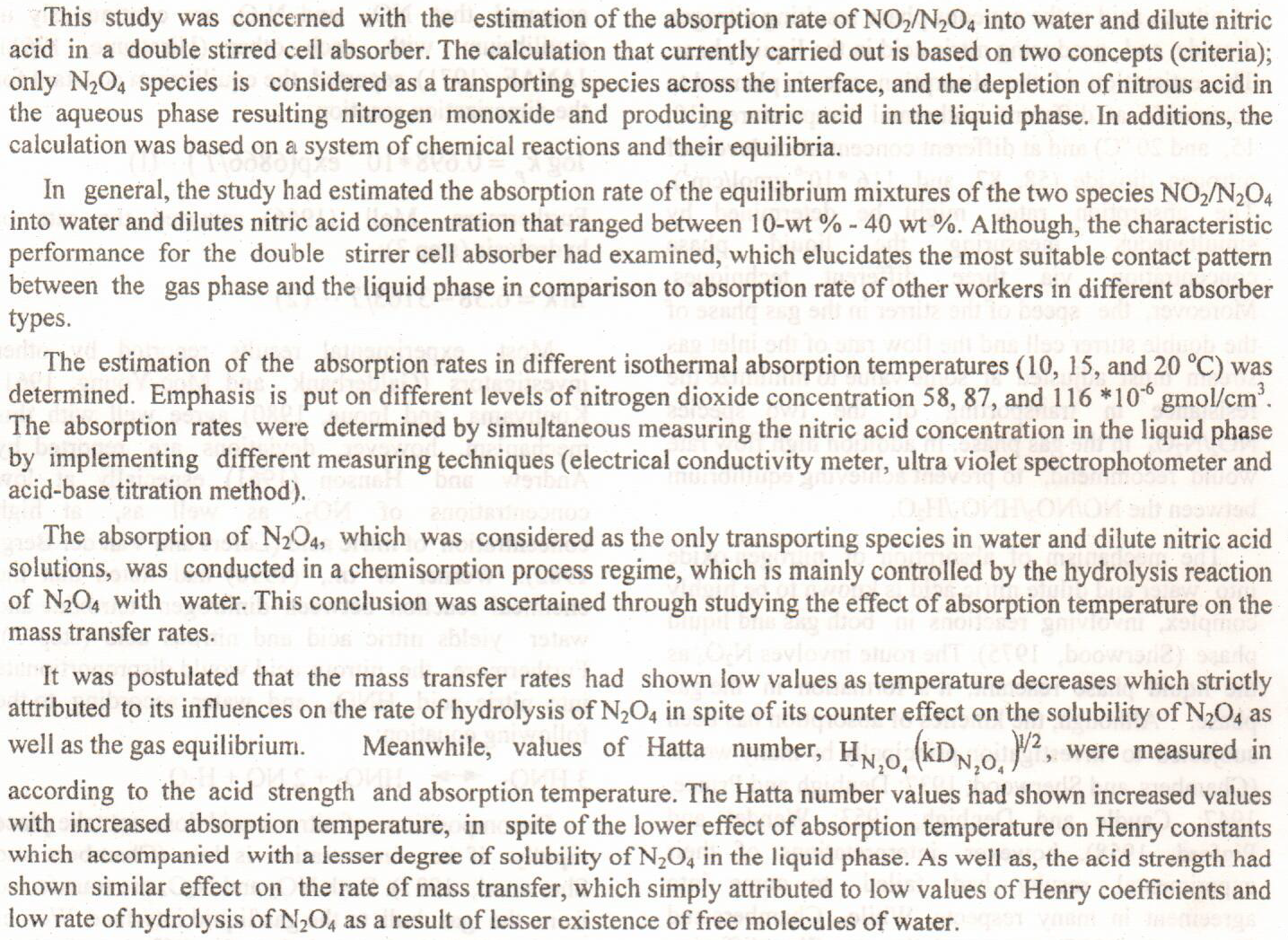
Background: ?-L-Fucose is a methyl pentose sugar similar to L-galactose except for the loss of alcohol group on carbon number 6. The objective of this study is to evaluate the biochemical and antioxidant effect of intracrevicular injection of fucose into rabbits periodontium, throughout measuring the levels of total protein (TP), total fucose (TF), protein bound fucose PBF) , Malondialdehyde (MDA) , and vitamin C in sera of fucose injected rabbit groups. ) Materials and Methods: The existing study was carried out on 55 male rabbits and were divided randomly into three groups ; first group was injected with 50µl of 150mM fucose solution into gingival sulcus ; second group was injected with 50 µl of normal saline ; while the third group was
... Show More (3)
(3)
The objective of this study was to investigate the drought stress and plant density possibility on water productivity and grain yield of maize (Zea mays L.) (Planting Baghdad 3 synthetic varieties), Field experiment was conducted at Abu Ghraib Research Station (Baghdad) during spring and Autumn seasons of 2016 using a randomized complete block design arranged in split plot with three replications. Three irrigation treatment included: irrigation after depletion 50% of available water (T1), irrigation after depletion 75% of available water (T2) and irrigation after depletion 90% of available water (T3) in the main plots and three plant density which were: 1 seeds hill-1 (D1) giving a uniform plant density of 66666 plants ha-1 , 2 seeds hill1
... Show MoreRecently Tobit Quantile Regression(TQR) has emerged as an important tool in statistical analysis . in order to improve the parameter estimation in (TQR) we proposed Bayesian hierarchical model with double adaptive elastic net technique and Bayesian hierarchical model with adaptive ridge regression technique .
in double adaptive elastic net technique we assume different penalization parameters for penalization different regression coefficients in both parameters λ1and λ2 , also in adaptive ridge regression technique we assume different penalization parameters for penalization different regression coefficients i
... Show MoreUtilizing the modern technologies in agriculture such as subsurface water retention techniques were developed to improve water storage capacities in the root zone depth. Moreover, this technique was maximizing the reduction in irrigation losses and increasing the water use efficiency. In this paper, a polyethylene membrane was installed within the root zone of okra crop through the spring growing season 2017 inside the greenhouse to improve water use efficiency and water productivity of okra crop. The research work was conducted in the field located in the north of Babylon Governorate in Sadat Al Hindiya Township seventy-eight kilometers from Baghdad city. Three treatments plots were used for the comparison using surface
... Show More (6)
(6)
The plant Borago officinalis, which belongs to the Boraginaceae family and Celebrated as borage, is one of the useful medicinal plants cultivated in Iraq. It was used in olde medicine in Iraq, Irane, Syria and Europe for management of various diseases. It is commonly used as an atonic, tranquilliser, management of cough, sore throat, pneumonia, swelling, inflammatory diseases, antioxidant, and anticancer. This project provides the first comprehensive research done in Iraq to study the phytochemicals and the methods of extraction and isolation of active constituents from Borago officinalis cultivated in Iraq. The plant was harvested in spring from AL-Rifai, Nassiriyah city, IRAQ in February 2019.were w
... Show More (5)
(5)
 (2)
(2)
Sadi formation is one of the main productive formations in some of Iraqi oil fields. This formation is characterized by its low permeability values leading to low production rates that could be obtained by the natural flow.
Thus, Sadi formation in Halfaya oil field has been selected to study the success of both of "Acid fracturing" and "Hydraulic fracturing" treatments to increase the production rate in this reservoir.
In acid fracturing, four different scenarios have been selected to verify the effect of the injected fluid acid type, concentration and their effect on the damage severity along the entire reservoir.
The reservoir damage severity has been taken as "Shallow–Medium– Sever
... Show MoreThe intestinal mucositis define as inflammation and ulceration in the gastrointestinal tract wall and in some case in the oral cavity these cause by treatment with antineoplastic drug like 5-fluorouracil and Irinotecan and other types of chemotherapeutics drugs , 5-Fluorouracil-induced intestinal mucositis (IM) is consider as one of the more common tumor issue .it cause series of undesirables symptoms like severe diarrhea ,abdominal pain , stomach uncomfortable and other. The aim of this current study to see how ellagic acid act to Attenuates 5-FU-Induced Intestinal Mucositis and Diarrhea in Mice . we induced the intestinal mucositis by injected the mice intraperitoneally in 5-fluorouracil about 50mg per kg daily for
... Show More (3)
(3)
 (4)
(4)
